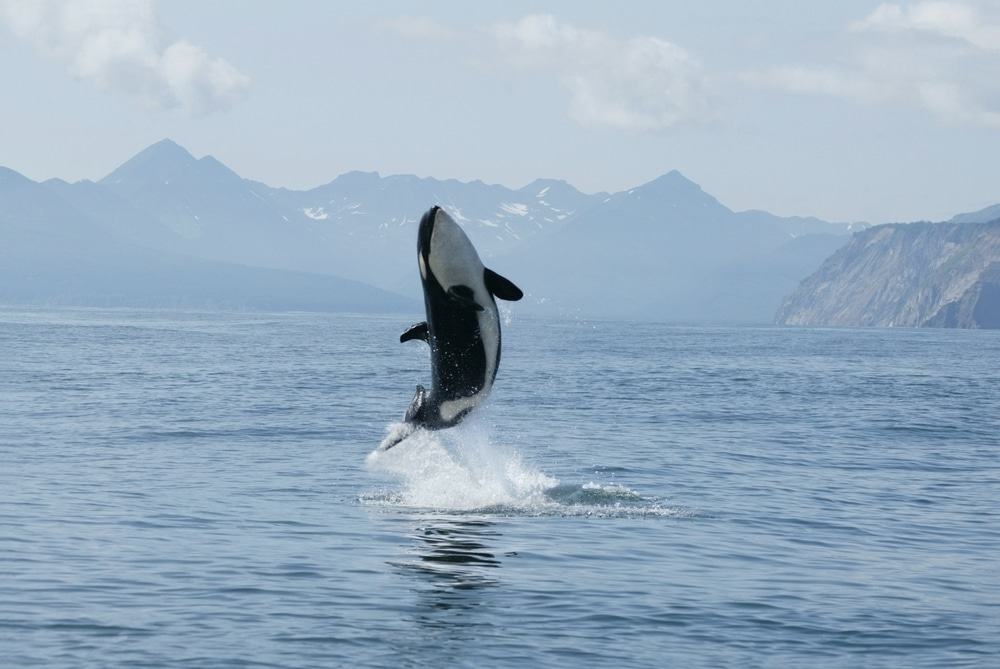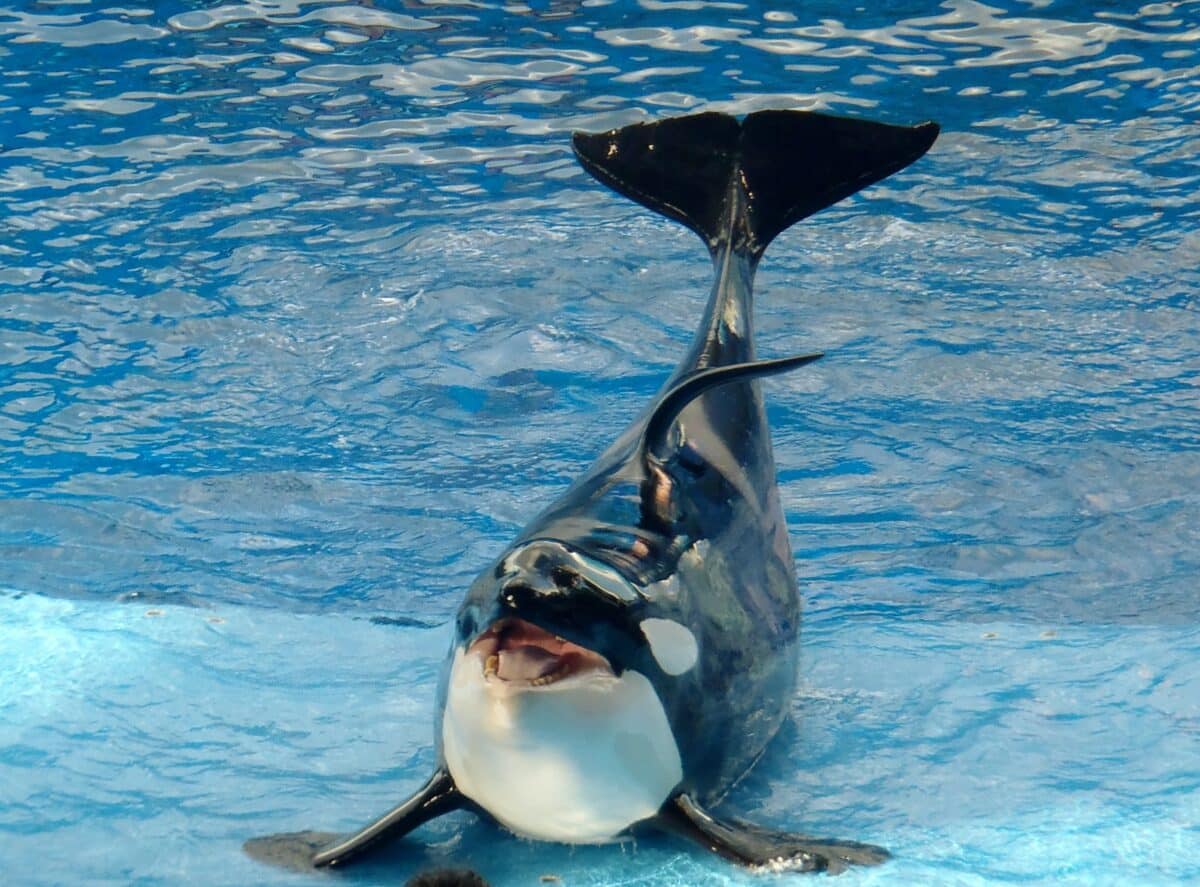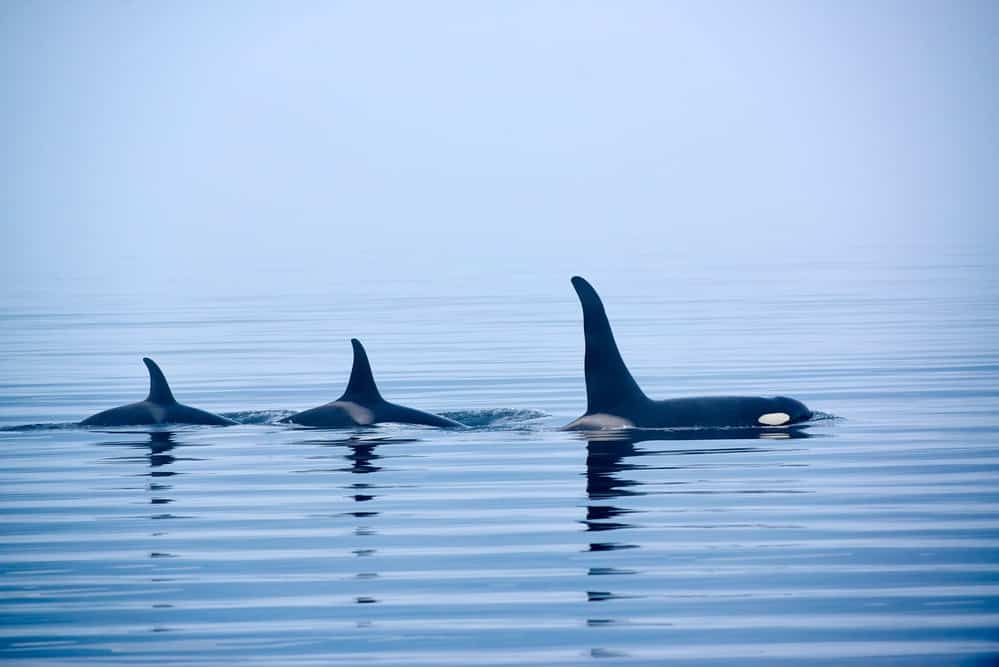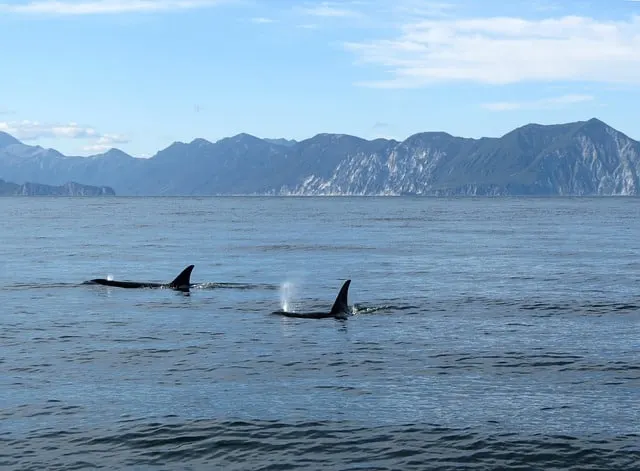Our expert-vetted content is grounded in current scientific publications, yet we acknowledge science’s ever-evolving nature. Read our full editorial and disclosure policy.
Introduction
Taking a look into orcas (Orcinus orca) hunting sharks in South Africa. A deadly duo of orcas (also known as killer whales) has been identified as the initial killers of sharks in South Africa. While they are not the first of their kind to do this, it has increased in occurrence and poses a risk to the delicate balance of the marine ecosystems along South Africa’s coastline. Read here to learn more about Port and Starboard, the two killers identified as culprits for several dead sharks.
Watch the story about the Port and Starboard in our expert interview here:
Key Points
- South African orcas, Port and Starboard, are increasingly hunting sharks, disrupting marine ecosystems.
- The orcas’ unique hunting strategy involves inducing ‘tonic immobility’ and removing shark livers.
- This behavior may be a response to environmental changes or a learned hunting strategy.
- The hunting tactic seems to be spreading to other orcas through ‘cultural transmission’.
- Dorsal fin collapse in orcas can be due to various factors, including captivity conditions.
Characteristics of Orcas
| Trait | Information |
| Size | Adult males typically measure 6-8 meters (20-26 feet) in length and can weigh up to 6 tons (12,000 pounds). Adult females usually measure 5-7 meters (16-23 feet) in length and weigh up to 4 tons (8,000 pounds). |
| Lifespan | Females live for around 50 years but can live up to 90 years in the wild. Males live for approximately 30 years but can live up to 50-60. Killer whales tend to live longer in the wild than in captivity. |
| Habitat | Orcas have a diverse diet, including fish, squid, and marine mammals such as seals, sea lions, and even other whales. Different populations of orcas have different dietary preferences. |
| Diet | Orcas have a diverse diet that includes fish, squid, and marine mammals such as seals, sea lions, and even other whales. Different populations of orcas have different dietary preferences. |
| Average Distance Travelled Per Day | Orcas travel approximately 75-100 miles (120-160 kilometers) daily. |
| Gestation | The gestation period for killer whales is approximately 17-18 months. |
Who are Port and Starboard?
Orcas, also known as killer whales, are among the most fascinating marine creatures due to their intelligence, social structure, and hunting strategies. One of the most intriguing behaviors recently observed involves a pair of male orcas in South Africa, nicknamed Port and Starboard, who have developed a method to hunt sharks. The male pair of orcas are named by to their dorsal fins that collapse left and right, respectively.
Port and Starboard, named after the nautical terms for left and right due to their distinctively bent dorsal fins, have been observed strategically and brutally hunting sharks. The pair have been seen targeting broadnose and sevengill sharks, a species abundant in the waters around South Africa. The orcas’ method of hunting these sharks is unique and demonstrates their intelligence and adaptability. However, this is not the first or only case of killer whales attacking sharks, but South Africa is the first place to have documented an attack using drone and helicopter footage. Necropsies (autopsies) were performed on dead sharks that washed ashore to establish a cause of death.
Killer Whales Attacking Sharks
Orcas flip sharks onto their back, to a state known as ‘tonic immobility’. This state induces a natural paralysis in the shark, rendering it unable to defend itself or escape. The orcas remove the shark’s liver, a rich energy source, leaving the rest of the carcass behind. This precision and selectivity in their hunting strategy is a testament to the killer whales’ cognitive abilities and knowledge of their prey’s anatomy.
What does this mean for the ecosystem?
This behavior, while fascinating, has raised concerns among scientists and conservationists. The area’s sevengill shark population has significantly declined since Port and Starboard began their hunting spree. This could have far-reaching implications for the local marine ecosystem, as changes in predator-prey relationships can have a cascading effect on other species. Reports suggest that after orcas killed a white shark, they fled the area indicating a flight response from the shark populations.

Why are Orcas hunting sharks?
The hunting strategy of Port and Starboard also raises questions about the adaptability of orcas in response to changes in their environment. Orcas have varying cultures that differ amongst groups exhibiting unique behaviors and hunting strategies. The behavior of Port and Starboard could be a response to changes in prey availability or a newly developed or learned hunting strategy that they may pass on to other group members.
The case of Port and Starboard provides a fascinating insight into the intelligence and adaptability of orcas. It also serves as a reminder of marine ecosystems’ complex and delicate balance.
Port and Starboard were suspected to be the initial culprits of hunting sharks in South Africa. This behavior and hunting tactic appears to spread to other orcas (see video of orcas hunting a great white shark in Mossel Bay, thought to be one out of three they hunted that day alone). Sharing this hunting tactic, known as ‘cultural transmission’, refers to learning by experience. This deadly duo may have come to the shores of South Africa, having learned this hunting strategy from other orcas.
What is a collapsed dorsal fin?
Why would the dorsal fin of an orca collapse or flop to the side? There are several theories for this dorsal fin collapse. Killer whales in captivity often have a collapsed dorsal fin. Collapsed dorsal fins could be. As a result, unnatural living conditions. In captivity, orcas do much less swimming and more time at the water’s surface, which results in the dorsal fin (made up of fibrous tissue) getting less support than it would if it were traveling and diving at high speeds for long distances.
When killer whales spend more time at the water’s surface (in captivity or nature), they expose their large dorsal fin to more gravity which may result in it falling over. In the wild, some reasons for dorsal fin collapse include; trauma, emaciation, gravity, water temperature, age, stress, or lack of hydration.

Wrapping it up
In conclusion, the unique hunting behavior of Port and Starboard, the orcas in South Africa, is a testament to their intelligence and adaptability. However, it also serves as a stark reminder of the delicate balance of marine ecosystems and the potential consequences of disrupting predator-prey relationships. As we marvel at the capabilities of these incredible creatures, we must also commit to protecting their habitats and preserving the biodiversity of our oceans.

Thank you for reading the article about the deadly duo of orcas! If you enjoyed reading this, you might want to keep learning more about killer whales! Click on one of the links below to learn more about them.
- Orca vs Great White Shark
- 4 Best Places to Swim or Dive with Orcas
- How and Why Orcas are Dominating False Bay
- A Rare Spectacle as Orcas are Spotted off Cape Cod
Frequently asked questions
The name “killer whale” comes from the species’ reputation as a powerful predator. Early observers of their hunting prowess referred to orcas as “whale killers,” which, over time, was reversed to “killer whales.” Killer whales hunt various prey, including fish, seals, and even other whales, contributing to their formidable name.
Adult orcas are apex predators, meaning they are at the top of the food chain and have no natural predators. However, young orcas or calves can be vulnerable to other large predators, including sharks. Human activities, such as pollution and overfishing, can also threaten them by reducing their food supply and degrading their habitats.
There have been instances where orcas in the wild appear curious and non-aggressive towards humans, often approaching boats and performing acrobatic displays. However, they are wild animals and must be treated respectfully.
In captivity, there have been incidents of killer whales causing harm to humans. Orcas that display aggression towards humans can be attributed to stress and frustration of being confined rather than inherent aggression.
Yes, killer whales, or orcas, still exist. They are found in oceans worldwide. There are populations of orcas that are threatened or endangered. Some contributing factors include pollution, loss of prey due to overfishing, and disturbance from boat traffic.
Conservation efforts are ongoing to protect and preserve these remarkable creatures.
- The Largest Horse Ever Recorded – Sampson - February 29, 2024
- The Origin of Dogs: How Dogs Became Our Best Friends - February 27, 2024
- A Love Affair: Pets and Valentine’s Day - February 13, 2024

